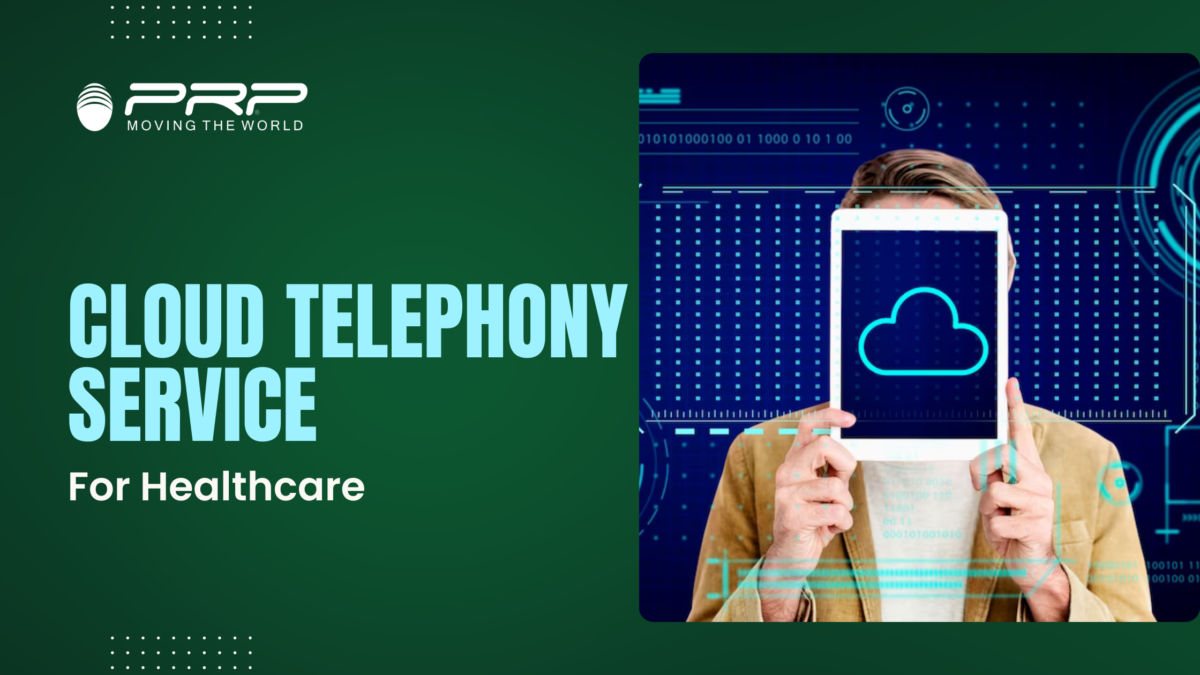Transforming Healthcare Communication with Cloud Telephony Service

Effective communication is vital for delivering quality patient care, streamlining operations, and ensuring regulatory compliance. Cloud telephony services have emerged as a game-changer in the healthcare sector, offering a host of benefits that enhance communication efficiency, patient satisfaction, and overall productivity. In this article, we’ll explore how cloud telephony services are transforming the healthcare industry, their uses, benefits, and considerations for implementation.
Introduction to Cloud Telephony in Healthcare:
Cloud telephony Service refers to the delivery of telephone communication services through the Internet, utilizing cloud-based infrastructure instead of traditional phone lines or on-premises hardware. In the healthcare sector, cloud telephony solutions encompass a range of services, including virtual phone systems, interactive voice response (IVR) systems, automated appointment reminders, and secure messaging platforms. By leveraging cloud technology, healthcare providers can streamline communication processes, improve accessibility, and enhance patient engagement.
Uses of Cloud Telephony in Healthcare:
- Appointment Scheduling and Reminders: Cloud telephony enables healthcare facilities to automate appointment scheduling and send reminders to patients via voice calls or SMS messages. This reduces no-show rates, improves appointment adherence, and enhances overall operational efficiency.
- Patient Communication and Engagement: Healthcare providers can use cloud telephony platforms to facilitate communication with patients, allowing them to inquire about appointments, medication refills, lab results, and general health inquiries. Interactive voice response (IVR) systems can efficiently route calls to the appropriate department or staff member, reducing wait times and ensuring prompt assistance.
- Teleconsultation and Telemedicine: Cloud telephony facilitates teleconsultation services, enabling healthcare professionals to conduct remote appointments with patients via voice or video calls. This allows for greater accessibility to healthcare services, especially for patients in remote or underserved areas, while minimizing the need for in-person visits.
- Emergency Response and Disaster Recovery: Cloud-based communication systems ensure uninterrupted access to critical services during emergencies or natural disasters. Healthcare facilities can maintain communication with patients, staff, and emergency responders, ensuring continuity of care and timely response to urgent situations.
Benefits of Cloud Telephony in Healthcare:
- Scalability and Flexibility: Cloud telephony solutions are highly scalable, allowing healthcare organizations to adjust capacity and scale their communication infrastructure according to changing needs. Whether expanding operations, adding new services, or accommodating seasonal fluctuations, cloud-based systems offer flexibility and agility.
- Cost Efficiency: Cloud telephony eliminates the need for expensive on-premises hardware and maintenance costs associated with traditional phone systems. By leveraging pay-as-you-go pricing models and avoiding capital expenditures, healthcare providers can significantly reduce communication expenses while accessing advanced features and functionalities.
- Enhanced Patient Experience: Cloud telephony services streamline communication processes, reducing wait times, improving accessibility, and enhancing overall patient satisfaction. Patients benefit from convenient appointment scheduling, timely reminders, and seamless access to healthcare providers, leading to better engagement and loyalty.
- Security and Compliance: Leading cloud telephony providers adhere to stringent security standards and compliance regulations, ensuring the confidentiality and integrity of patient information. Advanced encryption protocols, data backup mechanisms, and secure transmission channels mitigate the risk of data breaches and support compliance with HIPAA and other regulatory requirements.
Considerations for Implementing Cloud Telephony in Healthcare:
- Data Privacy and Security: Healthcare organizations must prioritize data privacy and security when selecting a cloud telephony provider. Ensure that the vendor complies with industry regulations and adopts robust security measures to safeguard sensitive patient information.
- Integration with Existing Systems: Seamless integration with existing electronic health record (EHR) systems, practice management software, and other healthcare applications is essential for optimizing workflow efficiency and data interoperability.
- Training and Support: Comprehensive training and ongoing support are critical for the successful implementation and adoption of cloud telephony solutions. Ensure that staff members are adequately trained to use the platform effectively and that technical support is readily available when needed.
- Scalability and Future Growth: Choose a cloud telephony provider that offers scalable solutions capable of accommodating future growth and evolving communication needs. Scalability ensures that the system can expand or adapt to changes in patient volume, service offerings, and technological advancements.
conclusion:
cloud telephony services are revolutionizing communication in the healthcare sector, empowering organizations to deliver superior patient care, improve operational efficiency, and enhance overall productivity. By leveraging advanced features such as appointment scheduling, teleconsultation, and automated reminders, healthcare providers can streamline workflows, optimize resource utilization, and elevate the patient experience. However, successful implementation requires careful consideration of factors such as data security, system integration, and scalability to ensure optimal performance and compliance with regulatory requirements. As the healthcare landscape continues to evolve, cloud telephony will play an increasingly critical role in shaping the future of healthcare communication and delivery.
https://www.hituponviews.com/wp-admin/post-new.php









